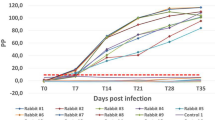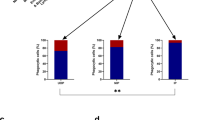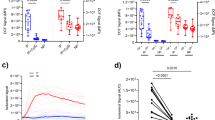Abstract
SERA from infected or immunised hosts have been reported to promote adhesion of leukocytes from those hosts to a variety of parasitic helminths1–5. Higashi and Chowdhury6 found selective adhesion of eosinophils to the infective larvae of Wuchereria bancrofti in the presence of serum from filariasis patients showing microfilaraemia, lymphoe-dema or elephantiasis. In albino rats infected with the filarial parasite Litomosoides carinii a termination of microfilaraemia (onset of latent infection) is associated with the adhesion of cells to microfilariae in the pleural cavity where the adult worms reside. Cells which seem morphologically to include macrophages, lymphocytes and polymorphs can be seen attached to living as well as to disintegrating microfilariae7. Virtually no attachment is seen during the patent stage of the infection. Furthermore, immunosuppression of rats with latent infection by means of cortisone, cyclophosphamide anti-lymphocyte serum or whole-body irradiation can lead to the appearance of microfilaraemia in the animals7–9. Because the observations suggest the occurrence of an immune reaction, perhaps cell mediated, against microfilariae we investigated the mechanism of cellular adhesion. The results reported here show that adhesion in vitro is mediated by a serum factor and is accompanied by a cytotoxic effect on microfilariae.
This is a preview of subscription content, access via your institution
Access options
Subscribe to this journal
Receive 51 print issues and online access
$199.00 per year
only $3.90 per issue
Buy this article
- Purchase on Springer Link
- Instant access to full article PDF
Prices may be subject to local taxes which are calculated during checkout
Similar content being viewed by others
References
Pandit, C. G., Pandit, S. R., and Tyer, P. V. S., Ind. J. med. Res., 16, 946 (1929).
Bang, F. B., Saha, T. K., and Bandyopadhyay, A. K., Bull. Calcutta Sch. trop. Med. 10, 152 (1962).
Newsome, J., Nature, 195, 1175 (1962).
Soulsby, E. J. L., Parasitology, 52, 5P (1962).
Wong, M. M., Am. J. trop. Med. Hyg., 13, 66 (1964).
Higashi, G. I., and Chowdhury, A. B., Immunology, 19, 65 (1970).
Bagai, R. C., and Subrahmanyam, D., Nature, 228, 682 (1970).
Subrahmanyam, D., Chaudhury, S., and Jain, S. C., Ind. J. Path. Bact., 17, 135 (1974).
Subrahmanyam, D., and Chaudhury, S., in Nuclear Techniques in Helminthology Research, 73 (International Atomic Energy Agency, Vienna, 1975).
More, D. G., Penrose, J. M., Kearney, R., and Nelson, D. S., Int. Arch. Allergy appl Immun., 44, 611 (1973).
Nelson, D. S., and Shneider, C. N., Eur. J. Immun., 4, 79 (1974).
MacLennan, I. C. M., Clin. exp. Immun., 10, 275 (1972).
Butterworth, A. E., Sturrock, R. F., Houba, V., and Rees, P. H., Nature 252, 503 (1974).
Capron, A., Dessaint, J.-P., Capron, M., and Bazin, H., Nature, 253, 474 (1975).
Author information
Authors and Affiliations
Rights and permissions
About this article
Cite this article
SUBRAHMANYAM, D., RAO, Y., MEHTA, K. et al. Serum-dependent adhesion and cytotoxicity of cells to Litomosoides carinii microfilariae. Nature 260, 529–530 (1976). https://doi.org/10.1038/260529a0
Received:
Accepted:
Issue Date:
DOI: https://doi.org/10.1038/260529a0
This article is cited by
-
Nematodes and the spleen: An immunological relationship
Experientia (1994)
-
Immunoprophylaxis against filarial parasite,Brugia malayi: potential of excretory-secretory antigens in inducing immunity
Journal of Biosciences (1991)
-
Action of diethylcarbamazine citrate on protective immunity in rats infected withNippostrongylus brasiliensis
Zeitschrift f�r Parasitenkunde Parasitology Research (1985)
-
Sharing of antigens among filarial species revealed by antibody dependent cell-mediated reactions
Journal of Biosciences (1985)
Comments
By submitting a comment you agree to abide by our Terms and Community Guidelines. If you find something abusive or that does not comply with our terms or guidelines please flag it as inappropriate.



